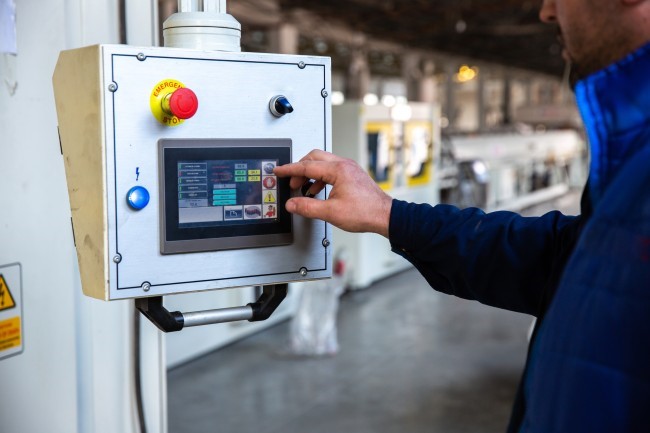
When it comes to product manufacturing, achieving seamless assembly is paramount for ensuring product integrity and functionality.
Among the wide range of techniques available, heat staking systems are a versatile and efficient method for joining components in various industries.
Heat staking offers a reliable solution for securely fastening parts together from automotive to electronics.
In this article, we will discuss the complexity of heat staking systems, exploring their mechanisms, applications, benefits, and considerations for implementation.
Understanding Heat Staking Systems
Heat staking, also known as thermal insertion, is a process that involves using localized heat to soften or melt thermoplastic materials, allowing them to be formed, molded, or bonded together.
The core component of a heat staking system is the heat staking machine, which typically consists of a heating element, a pneumatic press, and specialized tooling.
The process begins by placing the components to be joined into the appropriate fixtures or nests on the heat staking machine.
The heating element is then brought into contact with the target area of the thermoplastic material, applying controlled heat to soften it.
Simultaneously, the pneumatic press exerts pressure to bond the components together firmly. Once the desired temperature and pressure are achieved, the heat and pressure are removed, resulting in a secure and durable bond.
Applications of Heat Staking Systems
Heat staking systems find widespread applications across various industries, owing to their versatility and effectiveness.
In the automotive sector, these systems are utilized for assembling interior and exterior components such as dashboard panels, trim pieces, and grille inserts.
Additionally, heat staking is commonly employed in the production of consumer electronics, medical devices, appliances, and even household goods.
One notable application of heat staking is in the assembly of electronic enclosures and housings. By using heat staking to join plastic components, manufacturers can create seamless and aesthetically pleasing enclosures while ensuring structural integrity and electromagnetic compatibility.
Heat staking machines from bdtronic enable small quantities through to fully automated series production, catering to the varying needs of electronics manufacturers and facilitating efficient assembly processes.
Benefits of Heat Staking Systems
The adoption of heat staking systems offers several notable advantages for manufacturers:
- Cost-effectiveness: Heat staking eliminates the need for additional fasteners such as screws, bolts, or adhesives, reducing assembly time and material costs.
- Enhanced structural integrity: Heat staking creates strong, durable bonds between components, resulting in assemblies that withstand mechanical stress and environmental factors.
- Design flexibility: Heat staking allows for precise control over the joining process, enabling manufacturers to create complex geometries and intricate designs.
- Improved aesthetics: Heat staking produces clean, seamless joints with minimal cosmetic defects, enhancing the overall appearance of the finished product.
Considerations for Implementation
While heat staking systems offer numerous benefits, several factors should be considered when implementing this assembly technique:
1. Material compatibility
Not all thermoplastics are suitable for heat staking. Manufacturers must ensure that the materials being joined have compatible melting points and thermal properties to achieve optimal results.
Additionally, it’s essential to consider the chemical composition and structural integrity of the materials, as certain additives or reinforcements may affect their suitability for heat staking applications.
2. Tooling design
The design and configuration of heat staking tooling play a crucial role in achieving consistent and reliable results.
Customized tooling may be required to accommodate specific part geometries and assembly requirements.
Moreover, factors such as tool material, surface finish, and cooling systems should be carefully considered to minimize wear and prolong tool life, ensuring prolonged productivity.
3. Process optimization
Fine-tuning the heat staking process parameters, such as temperature, pressure, and cycle time, is essential for maximizing efficiency and quality.
Additionally, incorporating advanced monitoring and control systems can help automate the optimization process, fostering manufacturing innovations, ensuring consistent performance, and reducing the risk of human error.
4. Quality control
Implementing rigorous quality control measures, including inspection and testing protocols, helps identify and rectify defects early in the assembly process, ensuring the production of high-quality products.
Furthermore, establishing traceability systems and documentation procedures allows manufacturers to track and analyze quality data, facilitating continuous improvement initiatives and regulatory compliance.
Conclusion
Heat staking systems offer manufacturers a versatile and efficient solution for assembling thermoplastic components across various industries.
By harnessing the power of localized heat and pressure, heat staking enables the creation of strong, durable bonds while minimizing costs and enhancing product aesthetics. As manufacturing technologies continue to evolve, heat staking remains a valuable tool for achieving seamless assembly and driving innovation in product design
